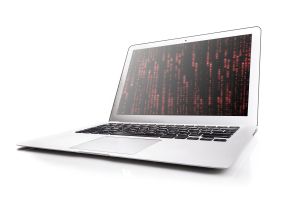

In the ever-evolving digital landscape, where cyber threats are becoming increasingly sophisticated, the security of your Control systems is paramount. A breach can result in severe consequences, from operational downtime to data theft or even physical equipment damage. Therefore, it’s crucial to grasp and implement robust security measures to protect your control systems. This comprehensive guide, designed specifically for security administrators, IT professionals, and personnel responsible for control system security, outlines the best practices to ensure the safety and security of your systems.
Understanding the Threat Landscape
Before diving into specific security practices, it’s important to recognise the types of threats your control systems might face:
- Cyber Attacks: Hackers targeting your control systems to gain unauthorised access or disrupt operations.
- Insider Threats: Employees or contractors with malicious intent or those who inadvertently compromise security.
- Physical Attacks: Unauthorised personnel physically tampering with control systems.

The first line of defence is ensuring only authorised personnel can access your control systems. Here are some effective methods:
- Multi-Factor Authentication (MFA): Require multiple forms of verification, such as something the user knows (password), something they have (security token), and something they are (fingerprint).
- Role-Based Access Control (RBAC): Assign permissions based on roles within the organisation, ensuring users can only access the functions necessary for their job.
Keeping your systems up to date is critical in defending against vulnerabilities:
- Software Updates: Regularly update the software running on your control systems to patch known vulnerabilities.
- Firmware Updates: Ensure all hardware components are updated to the latest versions.
- Automated Updates: Configure systems to automatically download and apply critical updates where possible.
Control systems often communicate over networks, making network security a priority:
- Firewalls: Implement firewalls to monitor and control incoming and outgoing network traffic based on security rules.
- Segmentation: Divide your network into segments to contain potential breaches and prevent lateral movement by attackers.
- VPNs: Use Virtual Private Networks (VPNs) for secure remote access, ensuring encrypted connections between remote users and the Control System network.
4. Physical Security Controls
Physical access to control systems should be tightly controlled:
- Secure Locations: Place control systems in secure locations with restricted access.
- Locks and Access Control: Use electronic locks and card access systems to limit physical access.
- Surveillance: Install CCTV cameras to monitor and record access to control system areas.
5. Regular Security Audits and Penetration Testing
Periodic evaluations of your security measures are essential:
- Security Audits: Conduct regular security audits to identify and remediate system and process vulnerabilities.
- Penetration Testing: Hire ethical hackers to perform penetration testing, simulating attacks to uncover weaknesses before malicious hackers can exploit them.
Human error is a significant security risk. Proper training can mitigate this:
- Security Training: Educate employees on security best practices, including recognising phishing attempts and social engineering tactics.
- Regular Updates: Provide regular updates and refresher courses on the latest security threats and how to counter them.
- Incident Response Drills: Conduct drills to prepare employees for potential security incidents and ensure they know how to respond effectively.
Despite best efforts, incidents may still occur. A well-defined response plan is crucial:
- Incident Response Team: Establish a dedicated team responsible for managing and responding to security incidents.
- Response Procedures: Develop and document procedures for identifying, containing, eradicating, and recovering from security incidents.
- Post-Incident Review: After an incident, conduct a thorough review to identify lessons learned and improve future responses.
To conclude
Securing control systems is an ongoing process that requires vigilance, regular updates, and proactive measures. You can significantly enhance the security of your control systems by implementing strong authentication, keeping systems updated, securing networks, controlling physical access, conducting regular audits, training employees, and having a robust incident response plan.
Partnering with experts, such as CXControls, can provide additional layers of security through professional services tailored to your specific needs. With our comprehensive solutions, we ensure your control systems are not only functional but also secure against the ever-evolving landscape of cyber threats. Remember, security is not a one-time task but a continuous commitment to protecting your operations and data. We can include all your security requirements in our systems support Service Level Agreements (SLA). To ensure continued defence against the latest threats.
Contact CXControls for more insights and professional assistance. We help you safeguard your control systems and maintain seamless, secure operations.


